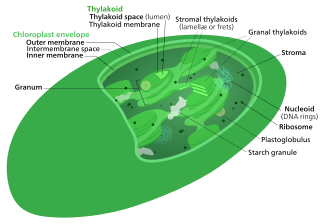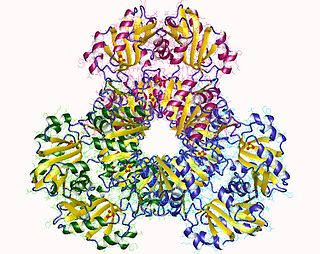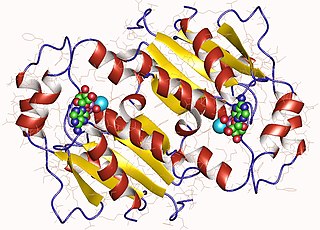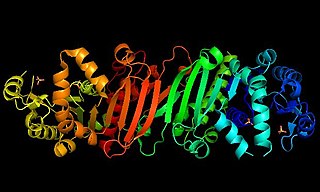| Ribose 1,5-bisphosphate phosphokinase | |||||||||
|---|---|---|---|---|---|---|---|---|---|
| Identifiers | |||||||||
| EC no. | 2.7.4.23 | ||||||||
| Databases | |||||||||
| IntEnz | IntEnz view | ||||||||
| BRENDA | BRENDA entry | ||||||||
| ExPASy | NiceZyme view | ||||||||
| KEGG | KEGG entry | ||||||||
| MetaCyc | metabolic pathway | ||||||||
| PRIAM | profile | ||||||||
| PDB structures | RCSB PDB PDBe PDBsum | ||||||||
| |||||||||
In enzymology, a ribose 1,5-bisphosphate phosphokinase (EC 2.7.4.23) is an enzyme that catalyzes the chemical reaction
- ATP + ribose 1,5-bisphosphate ADP + 5-phospho-alpha-D-ribose 1-diphosphate
Thus, the two substrates of this enzyme are ATP and ribose 1,5-bisphosphate, whereas its two products are ADP and 5-phospho-alpha-D-ribose 1-diphosphate.
This enzyme belongs to the family of transferases, specifically those transferring phosphorus-containing groups (phosphotransferases) with a phosphate group as acceptor. The systematic name of this enzyme class is ATP:ribose-1,5-bisphosphate phosphotransferase. Other names in common use include ribose 1,5-bisphosphokinase, and PhnN. This enzyme participates in pentose phosphate pathway.









